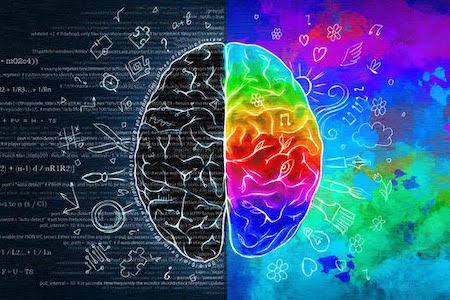
EMDR Therapy – Reprocessing Trauma for Healing and Resilience
What Is EMDR Therapy?
In the 1980s, psychologist Francine Shapiro noticed a strong connection between eye movement and reflection on traumatic memories amongst her clients. Because of her findings, she devoted herself to researching this connection and developed standards for Eye Movement Desensitization and Reprocessing (EMDR) therapy ¹. Today, therapists use EMDR to treat a wide range of mental health conditions rooted in past trauma.
After experiencing a traumatic event, your brain may not be able to “store” your memories properly. Instead, your recollections of the event become fragmented, and your body holds on to the effects of unprocessed trauma. Even if you’re not consciously thinking about the event, these memories can resurface, causing you to feel trapped by the negative beliefs associated with your trauma.
EMDR does not erase traumatic memories, but it enables your brain to develop an adaptive response to distressing experiences with bilateral stimulation. Through EMDR therapy, you can finally reprocess past trauma, cultivate positive beliefs about yourself, and embrace your personal freedom.
Healing Is Possible! Send Us A Message!
The Effectiveness Of EMDR Therapy
An extensive body of clinical research illustrates the effectiveness of EMDR therapy for treating mental health conditions rooted in trauma. EMDR is a particularly effective treatment for people struggling with addiction, including substance abuse and sex addiction. Until recently, researchers believed that patients should heal from addiction first before trying to process past trauma. However, experts in the field today recommend addressing trauma beforehand or even simultaneously with addiction treatment through interventions like EMDR ².
A randomized controlled study conducted by Hase et al. (2008) indicated that patients with chronic alcohol dependency were significantly less likely to experience cravings after one month of EMDR treatment than patients who did not receive EMDR ³. Emerging research on EMDR also reveals a promising outlook for treating those with gambling addictions ⁴. Studies show that anywhere from 67 to 92 percent of people with a substance abuse disorder have lived through at least one traumatic event, and EMDR allows them to process these events without bringing up memories that could prove retraumatizing ⁵.
How Does EMDR Therapy Work?
In EMDR counseling, we guide clients through seven distinct stages of the healing process. We begin by gathering your history to identify the traumatic event and the negative beliefs rooted in this experience. Next, we provide you with resources to help you stay centered during sessions and outside of therapy. After this, we’ll begin working with bilateral stimulation to assess your nervous system’s response to the event and work towards desensitizing your reaction to negative thoughts. You’ll then focus on strengthening your positive beliefs and releasing any nervous energy. We’ll also walk you through a complete body scan to process any lingering discomfort.
In the final stage, you will establish a sense of closure so that you can end your treatment feeling safe and content. During treatment, we’ll teach you methods for visualizing a calm space when you feel distressed. For clients who want to target events that happened less than three months ago and have not been stored in long-term memory, we offer EMD services as well.
To understand EMDR, it can be helpful to imagine your memory as a filing system. If you experience a traumatic event, your brain can’t file it away neatly. Instead, the filing system becomes disorganized, and these memories can surface without warning. When this sensory experience resurfaces, it hijacks your emotional experience, and you involuntarily react to the distress all over again. EMDR enables you to “file away” these sensory memories so that you can truly heal.
Who Can Benefit From EMDR Therapy?
In our practice, we work with teens and adults suffering from anxiety, panic attacks, addiction, compulsivity, and interpersonal issues due to past trauma. People who have seen little progress from other forms of therapy might benefit greatly from EMDR because bilateral stimulation allows clients to process the sensory information connected to distressing events.
Recent Posts
Our Background In EMDR Therapy
After working through EMDR therapy as part of an addiction treatment program, Tal realized the transformative potential of this therapeutic approach. He was able to experience its effectiveness firsthand, and he was inspired by the benefits. When we opened the doors of our practice, he knew that he wanted to offer the same healing power to all who came to Insights seeking help, especially those who were survivors of complex trauma.
Tal completed level 2 EMDR therapy training in 2019 and certification training in 2022. Teresa completed the EMDR training in 2021 and became an EMDR Certified Therapist in 2023 after completing an additional year of supervision under Dr. Christie Sprowls, who learned from Dr. Francine Shapiro.
Why We Started Working With EMDR Therapy
Many clients who come to us to heal from complex or acute trauma struggle with the burden of shame and negative beliefs about themselves. EMDR allows us to reach people suffering from deep-seated pain and take part in a sacred healing process. We can also integrate EMDR counseling with treatment for sex addiction and partner trauma work.
In some cases, we may be able to provide EMDR treatment in the space where the traumatic event happened. While this is not recommended for every client, it can be a powerful aspect of the healing process for some.
Heal Your Trauma Through EMDR Therapy
To schedule your first appointment or to schedule a free 10-minute phone consultation, please email us or reach out through our contact page.
¹ https://www.ncbi.nlm.nih.gov/pmc/articles/PMC3951033/
² https://connect.springerpub.com/content/sgremdr/11/1/3?
³ https://connect.springerpub.com/content/sgremdr/2/3/170
⁴ https://connect.springerpub.com/content/sgremdr/14/1/46
⁵ https://journals.lww.com/jan/Abstract/2020/07000/What_You_Need_to_Know__Eye_Movement.13.aspx









